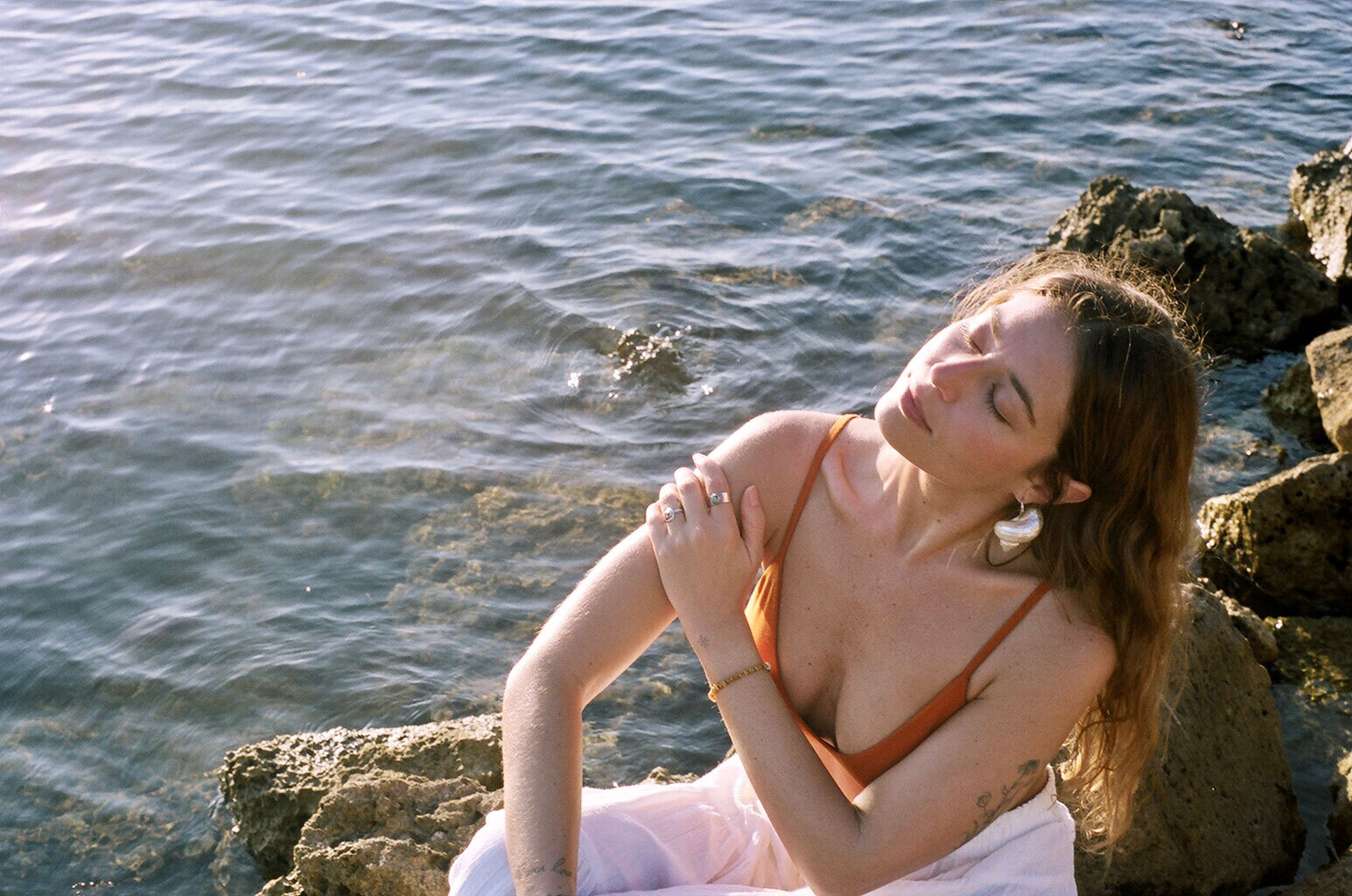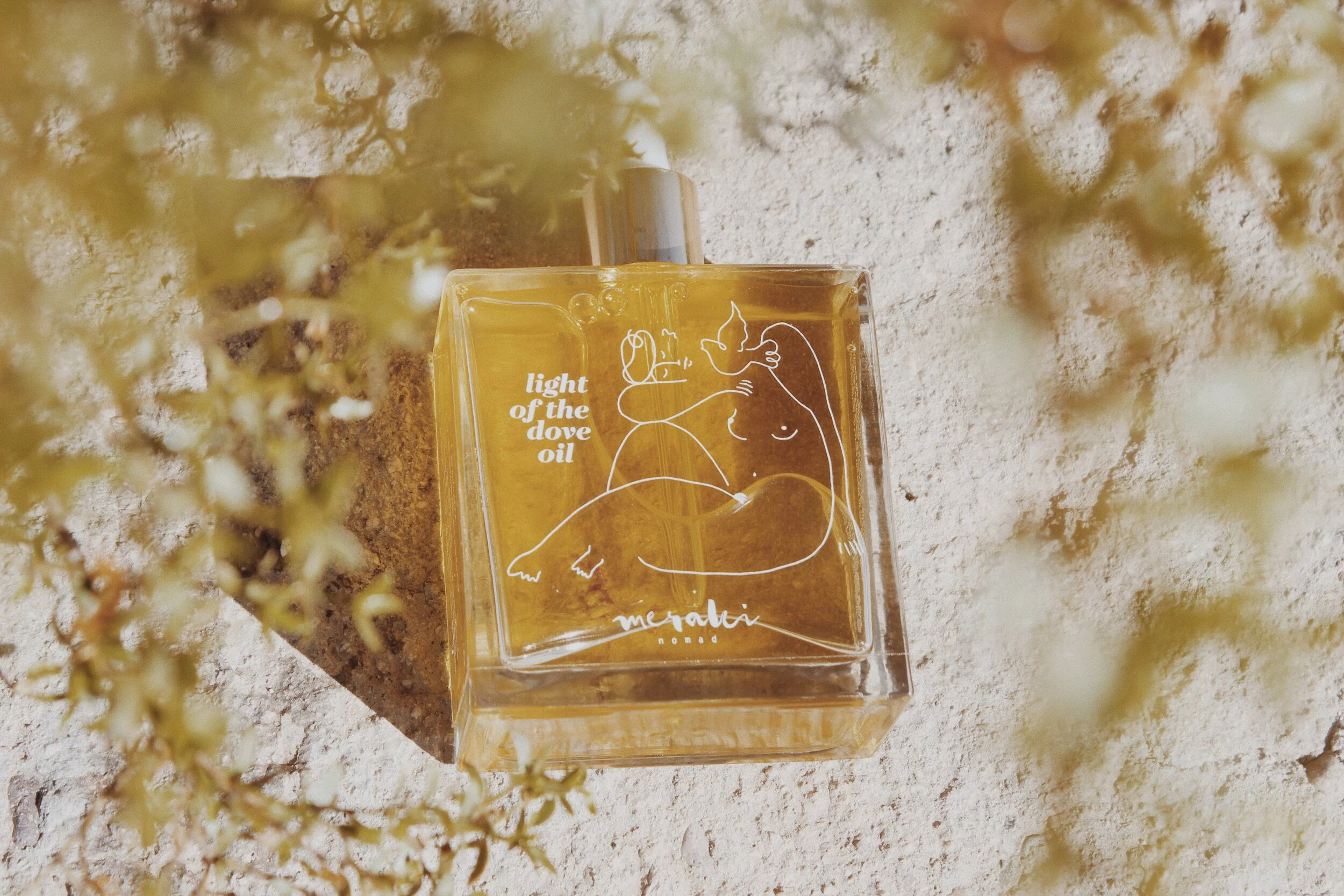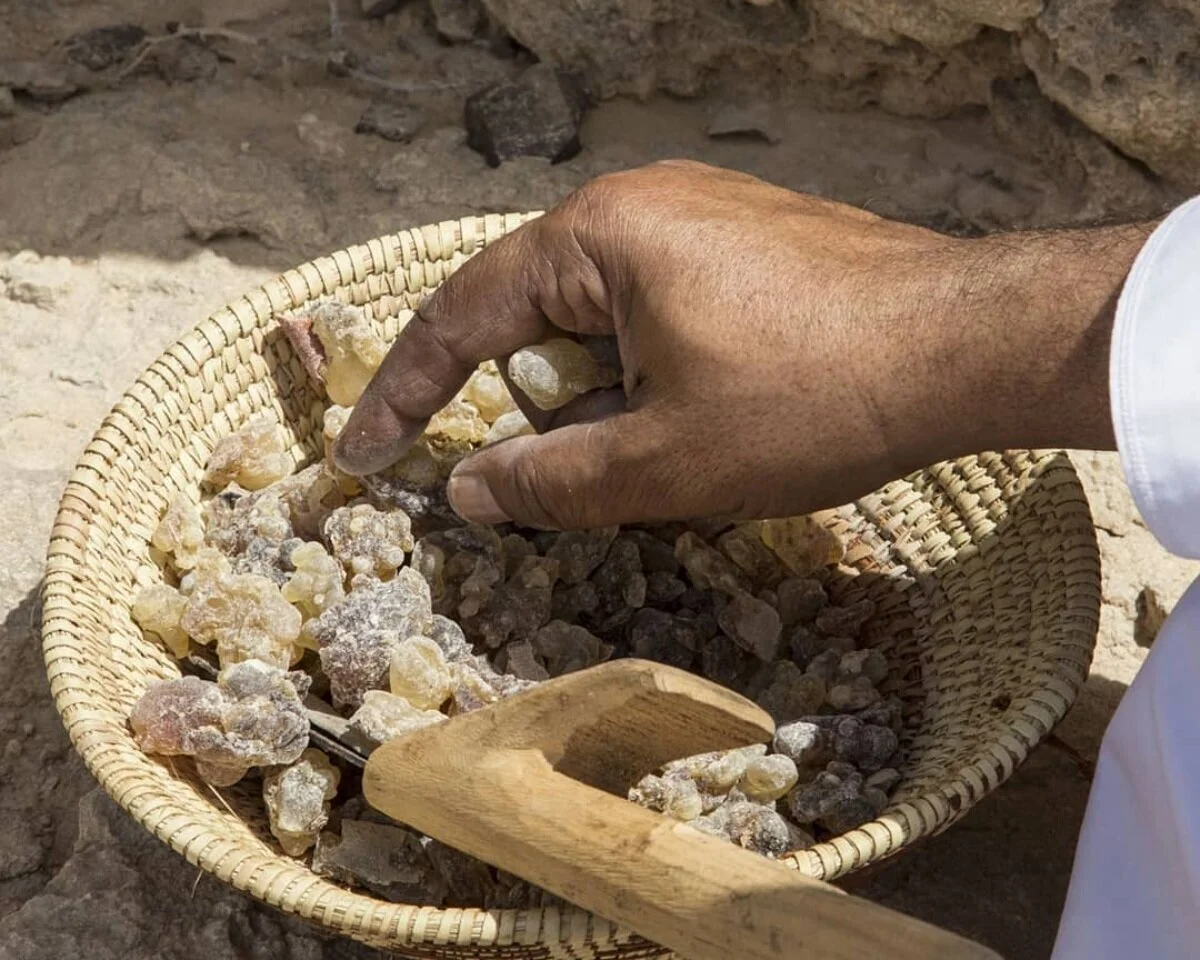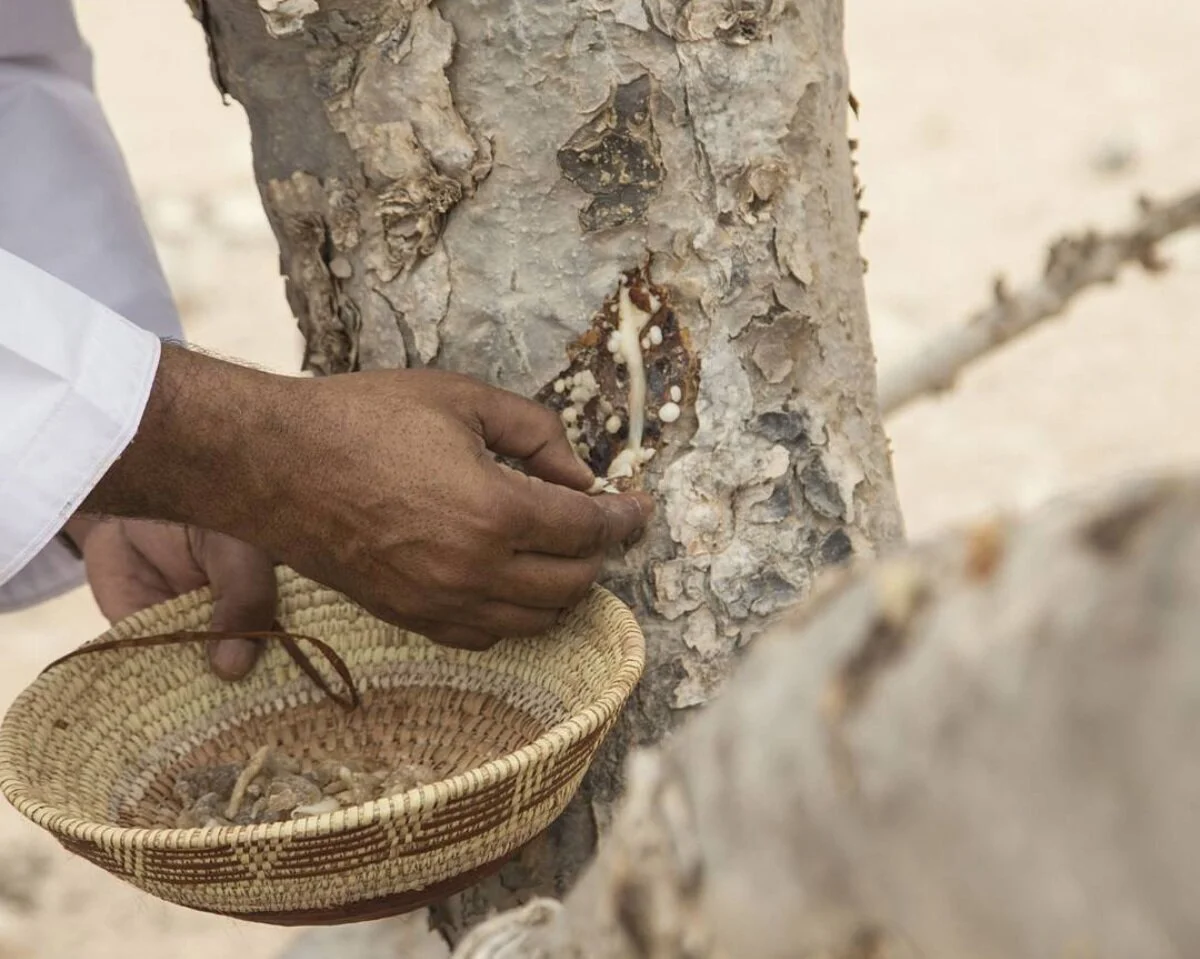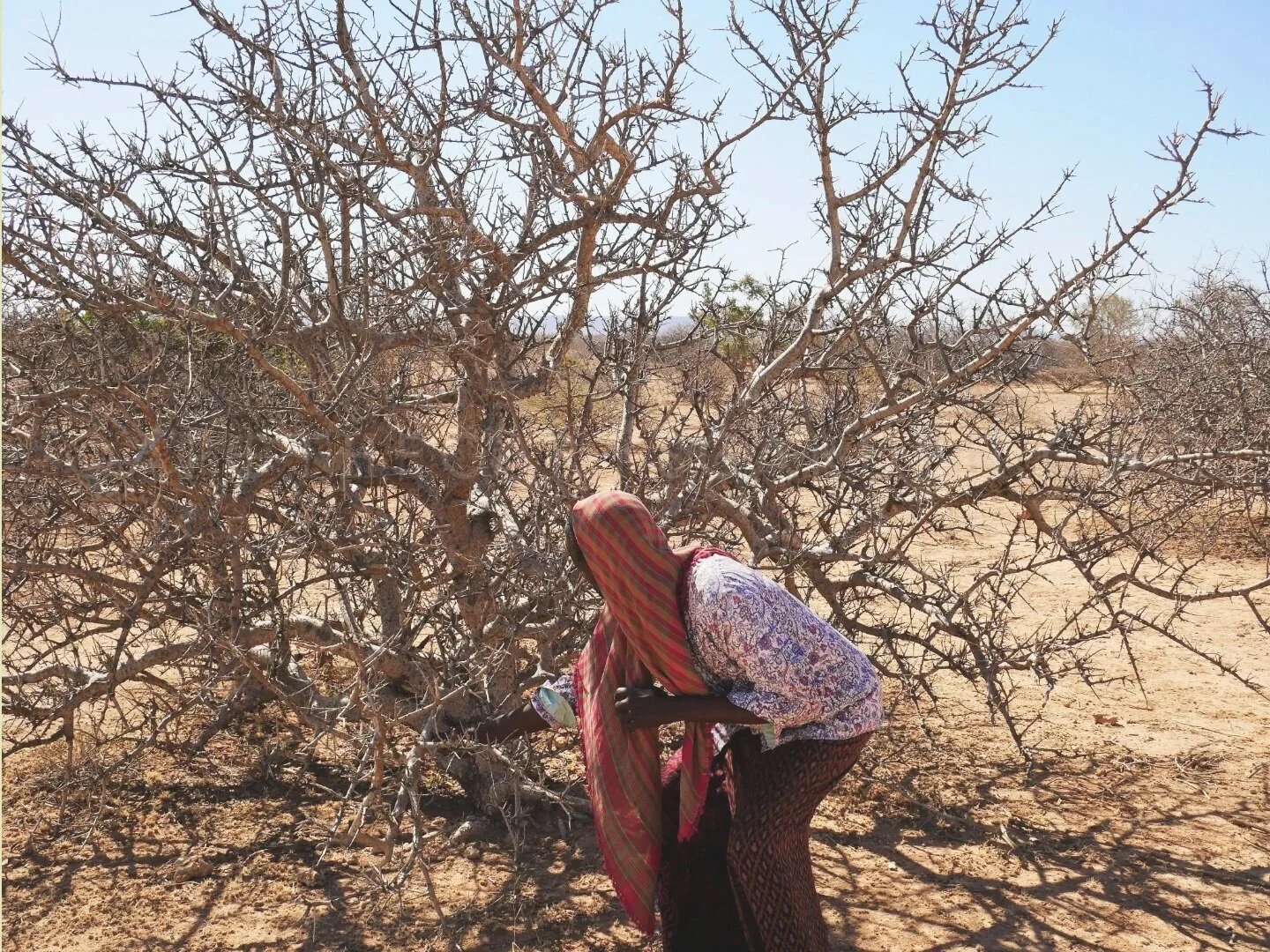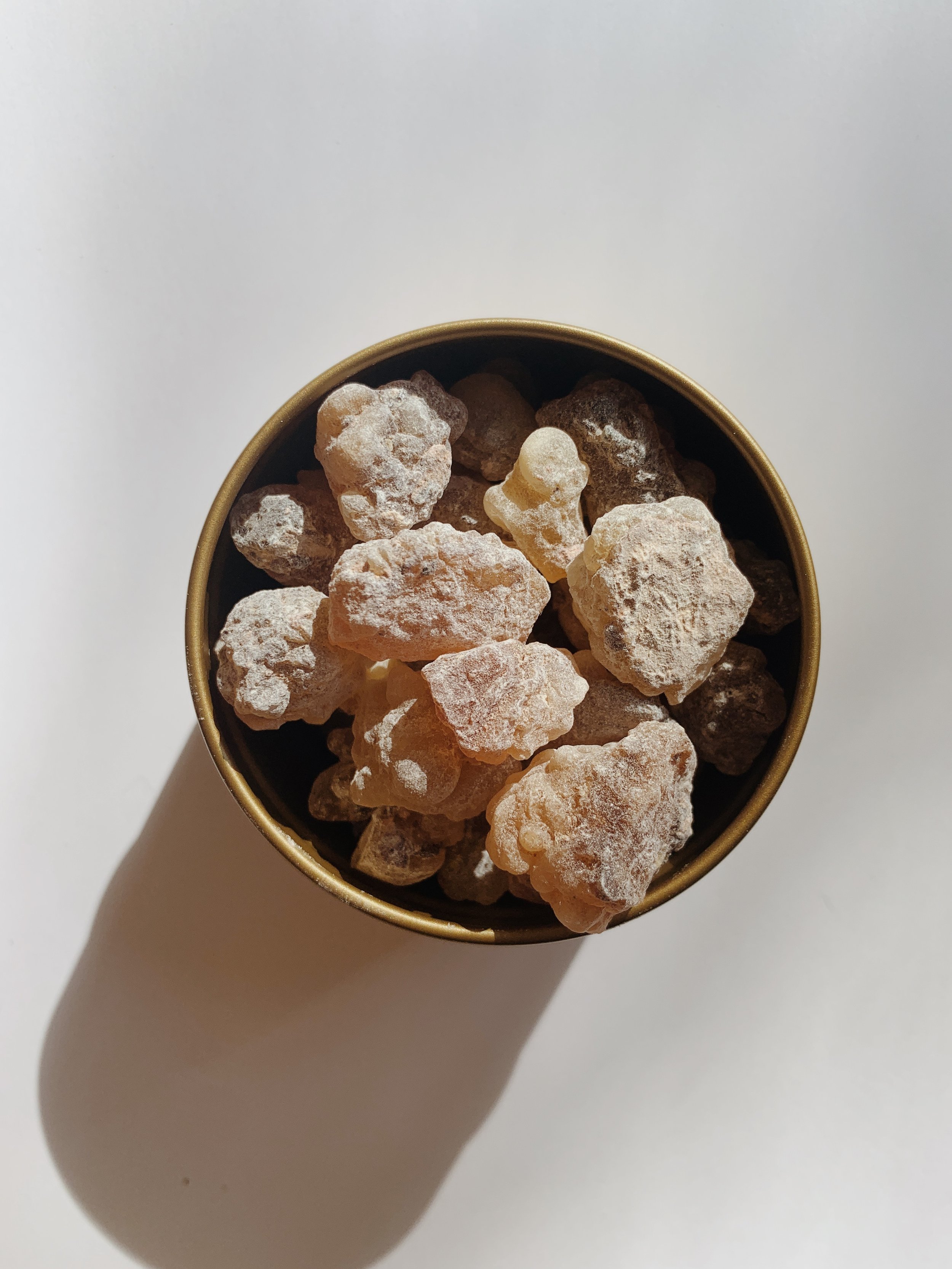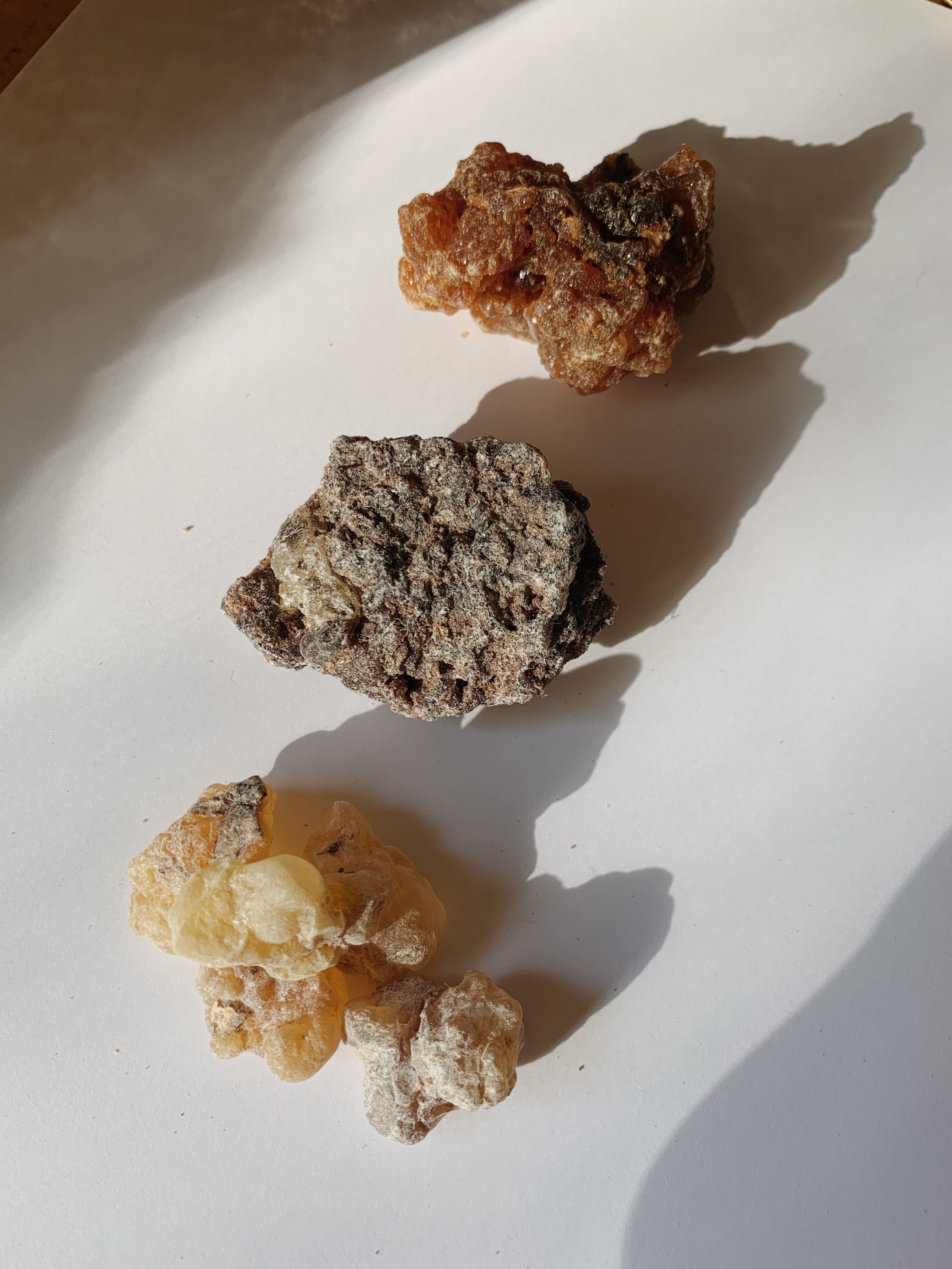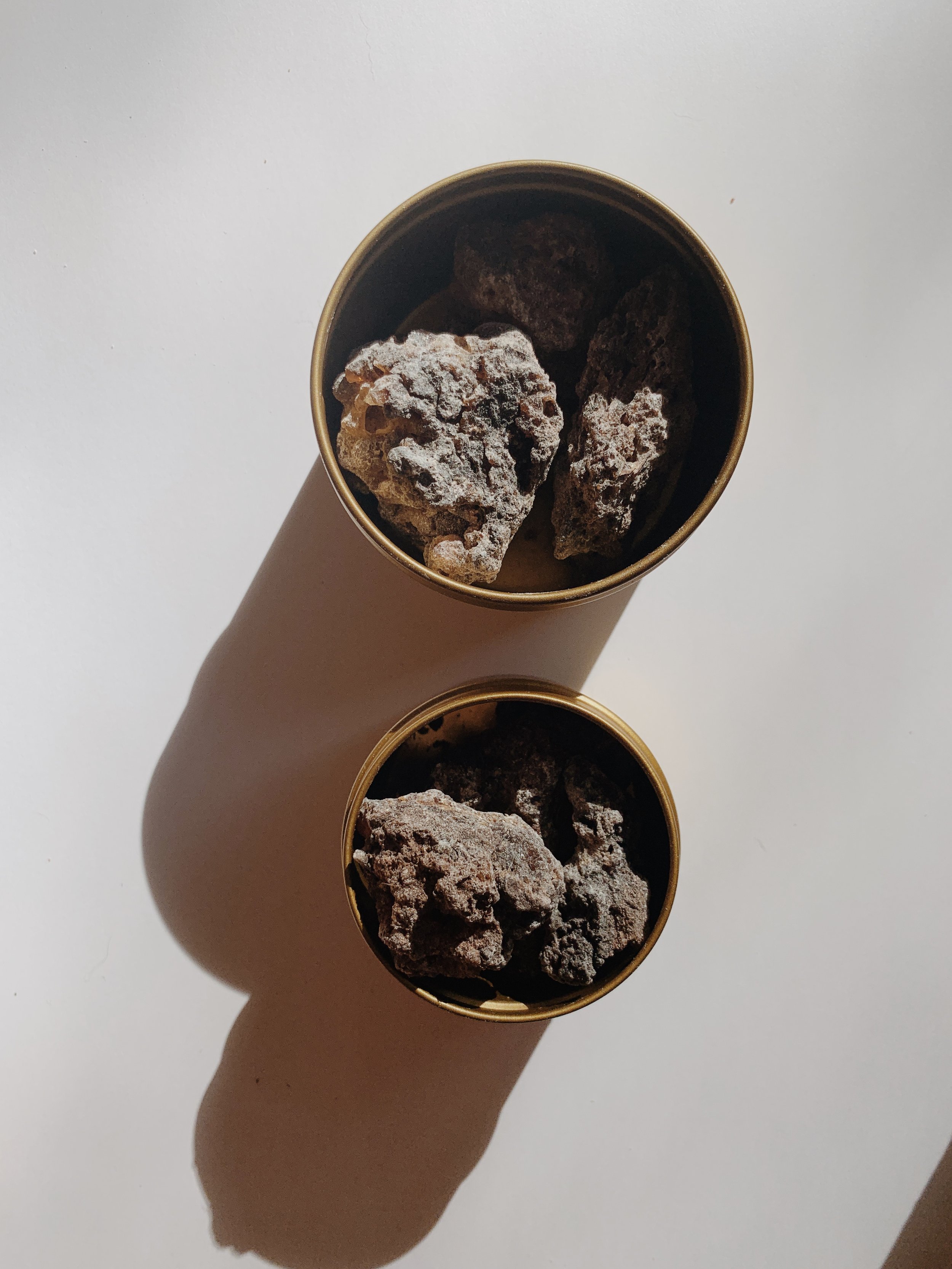HERBAL BODY OILING
It all begins with an idea.
Herbal Body Oiling has become one of my most beloved rituals.
A delicious ceremony to commune + heal with the plants. This practice tends to your nervous system, lymphatic system, musculoskeletal system, & immune system as the medicinal plants are directly transferred through your largest organ (your skin) and from there they are able to access these systems and begin working.
A simple + profound way to nourish the body into a state of calm relaxation and health.
botanical infused oils
are made of dried or fresh whole plants that are placed in a carrier oil and infused for 3-6 weeks. This allows ALL of the medicinal chemical
constituents of the plant to be pulled into the oil. Essential oils are different because they are concentrated extractions of volatile oils from a plant,
which is a very small portion of the total availability of a plant's medicinal constituents in actuality. In a whole plant infusion, every part of the
plant is extracted to provide the ultimate medicinal oil for your skin + systems!
(Journal post coming soon on Essential Oils vs. Herbal Oils.)
nervous system nourishment
Nourishing the nervous system and allowing it to drop into a state of calmness amidst such an active & stimulating society is a vital form of daily self-care. Allowing yourself to feel centered and in tune with yourself and your emotions enables you to take on anything that comes your way with peace and ease. It is magic to be the master of our nervous system and a gift to have the tools to do so. Herbal Body Oiling is one of those simple yet profound tools. Plants like Lavender, Kava, Tulsi, + Rose (all infused in Oil of the Sisters) are examples of some plants that are deeply calming to the nervous system, anxiety, and stress. Applying their medicine onto your skin through an infused oil allows them to directly access the nervous system and drop it to an immediate state of calmness. You can truly feel it almost immediately. The simple act of rubbing + massaging your body is also such a loving practice that tells your nervous system that it is okay, that you are safe, and you are loved.
“Whatever your philosophy of life, the nervous system is your only means of connecting and interacting with your world. If you treat your nervous system like the sensitive system it is, it will play back the finest music to enrich your being. Keep it tuned and healthy, feed it well, and protect it from overuse and exploitation, and your reward will be a life of exquisite quality. Through even the most stressful events, you will feel centered and empowered.”
- Rosemary Gladstar.
self-massage for the lymphatic + immune system
The Lymphatic system is the only system in our body that needs touch in order to properly function and flow. The Lymphs, when they are active and healthy, keep our immune system working and strong so that it can fight off harmful pathogens, bacterias, infections, and dis-eases. When the skin is dehydrated, the lymph is dehydrated, causing it to stagnate. When the Lymph stagnates, our immune system suffers. Herbal oils deeply hydrate the skin with fat (as opposed to lotions that contain water that is quite drying) which allows us the keep these systems nourished, healthy, and running smoothly. The ritual of self-massage gets our lymph flowing, relieves congestion in the body, releases toxins, strengthens the immune system, and relieves inflammation. You can research different lymphatic drainage massage techniques as well and get familiar with where the lymph nodes are throughout the body. I also believe that the simple act of pressured touch while applying herbal oils allows your body to activate and flow, but if you feel you need lymphatic drainage, there are some specific techniques in which you can apply while you oil. I love the guidance by Lisa Levitt Gainsley on @thelymphaticmessage.
a protective auric field
My favorite aspect of this ritual is the feeling of bathing in a protective aura of plants that surrounds you with love and support. To feel their spirits radiating out into your energetic field, clearing blockages, protecting your energetic field, feeling them with you, attuning to their vibration.
Amber of @mythicmedicine wrote “By making Herbal Body Oiling a regular practice, you create a layer of nourishing protection around your body. This ambient aura is both subtly etheric and physically powerful. It’s as if the oil on your skin extends its energy outward to fill up space around you, ensuring that whatever comes your way is processed first through this layer of healing defense, slowing down and transforming what can otherwise be anxious and overwhelming reactions.” (I first learned about the practice of herbal body oiling from Amber’s e-book years ago and have been in love ever since.)
This is so powerful + true, it makes me want to cry! It is such a beautiful gift that the plants give us. When I make my botanical oils, this is often the initial purpose of the plants that call to be gathered together. I create with their spirit + energy first, I allow them to guide me. Then after they are created, I realize how incredible they also are for the skin! Magic. Light of the Dove Oil was created with the intention of protection against taking on other's energy and keeping your auric field strong and true.
an invitation for ritual
Take a nice warm shower or bath. Light some incense, put on some music, or sit in silence.
Create whatever sacred space means to you.
Place a towel down to sit naked on (I sit on my bed). Choose an oil that you feel will nourish you the most
(mine change often depending on what I’m feeling that night - sometimes I want more hydration, to inhale roses, to feel deeply grounded, pain relief, relaxation).
Place a few droppers full of your oil into your hand and rub your palms together.
Take a few deep breaths - inhale the scent of the plants + oil, sinking into relaxation + surrender, beginning to commune.
Start at your feet and work your way up, lathering and massaging your entire body. Taking your time in each place,
tending to every inch of your body, being a lover to yourself, listening to whatever feels good to you.
Allow yourself to indulge + receive.
Once you are done, let the oil sink into your skin a bit longer before putting any clothes on, use this time to
relax and enjoy the calming state you are in. Lay down and listen to music or dive into a meditation. Or lay in the sun outside.
Another way to ritual is to simply lounge on your bed, on a towel, and watch a movie while you oil, or whatever feels
good to you! The simple act of placing the oil on your skin and rubbing your body is all you need - it doesn’t always
have to be done in sacred space in the most ritualistic way. It can be simple and just as nourishing and healing!
Bathe, adorn, and allow yourself to be fully supported by the plants.
“DO YOU REMEMBER WHAT IT FEELS LIKE TO BE WORRY –FREE? TO BREATHE IN THE SWEET SMELL OF YARROW, MUGWORT, AND PINE? DO YOU REMEMBER WHEN YOU PLACED YOURSELF IN THE HIGHEST PLACE OF IMPORTANCE? SELF-CARE INVITES YOU TO REMEMBER ALL OF THESE THINGS. MASSAGE YOURSELF WITH HERBAL OIL, BATHE IN HERBAL WATERS, AND PLACE YOUR BARE FEET ON THE GROUND. TEACH YOUR LOVED ONES TO DO THE SAME. NOTHING COULD BE MORE IMPORTANT.”
-Vicky Salcido-Cobbe via Amber Magnolia Hills E'-book.
SUN WORSHIP
It all begins with an idea.
Oh, how I love the Sacred Sun! The energy of joy, vitality, life, + light. How we can trust it, every day, to rise for us without fail.
To feed and to fuel us, to be the source of life to the earth and all of her inhabitants. We could not survive without the Sun!
I am such a sun child. I feel most beautiful when I am beneath the sun, soaking in those golden rays, feeling warm and kissed. My energy is fueled
by the sun. When it’s bright and sunny, I feel energized and motivated! When the days are dimmer, my energy is a bit lower,
I feel quiet and more reflective. I love those days too, knowing the sun is still there lurking behind the clouds.
Each morning I rise to greet the Sun. Gently smiling, raising my arms up tall, taking in the first light, opening the curtains, grateful for another day of life.
ancient sun worshiping
The history of sun worship dates back centuries, each indigenous culture worshiping their Sun God or Goddess. Ra (ancient Egypt), Surya
(Hindu), Helios (Greek), Tezcatlipoca (Aztec), Sulis (Celtic), and beyond. Many ceremonies are still practiced to praise the sun. The indigenous
people of the Americas honor the Sun and earth’s harvest bounty at the traditional Sun Dance Festival around Summer Solstice. The indigenous
Tamil people of South India pray to the sun during the Tamil (harvest festival) after a year of crop farming.
If you practice an Earth based spirituality, we also celebrate and honor the sun through the celebration of seasons and seasonal holidays -
honoring the waxing and waning of the sun. The Spring and Autumn Equinox marks the time of year when the sun’s light is equal to the night’s
darkness, where we are in perfect balance. The Summer Solstice marks the time when the sun is closest to the Earth, it is at its peak and in full
expression, and it is the longest day of the year. The Winter Solstice marks when the sun is furthest from the Earth, the light is dim and soft,
and it is the shortest day of the year - a time where we honor the sun as it wanes.
Photo Spirit Weavers Gathering by Dominoe Farris.
a programmed fear of the sun
I’ve always felt that sunscreen did more harm than good, before I even knew about the harmful ingredients it contained. A thick white paste filled with unknown substances that you slather all over your body to block you from the gorgeous sun!? Why oh why would I want to block myself from the healing sun? My body craves the sun - pure sun, without a chemical filter. I will wear some natural, zinc oxide mineral cream occasionally on my face + chest if I am spending long, long hours in the sun, but other than that I feel that it is healthy to take in the sun. I know aging + wrinkles is of concern to many when it comes to sun bathing, but I am not convinced that it is solely the sun that is the culprit here. Another fear is of course skin cancer. A review study published in the Journal of the American Academy of Dermatology in February states, “Sunscreen is a multibillion-dollar industry, and its efficacy in the prevention of skin cancer is often taken as fact,” the authors note. “Despite this, there are only four prospective studies that examine sunscreen’s role in preventing skin cancer, and none of these studies examine the efficacy of sunscreen in preventing skin cancer in otherwise healthy individuals.” I am definitely in support of a 100% organic, mineral + zinc based sunscreen - but I also feel that perhaps we’ve been so conditioned to fear the sun that we apply it before allowing ourselves to take in the sun at all!
“Properly aired and sunlit, skin becomes velvety, supple tissue, absolutely immune from anything of the nature
of pimples, acne, and incapable of infection. Sunshine is the finest cosmetic. Skin, well-pigmented in response to
sun-bathing, becomes firm and strong, but at the same time delicate and soft. Followed, by a filling out of the
exposed skin and a smoothing away of wrinkles results from sunbathing. Increased beauty is the outcome.”
- written by an English physician in 1929 in Sunlight and Health.
(Much different advice than what we receive now! Found via Living Libations)
I went to a dermatologist last year, for the first time since my teens, to get some of my moles checked. I made the huge mistake of literally going to the beach all morning, soaking in the sun and swimming in the ocean, and catching a cab directly from the beach to my appointment - classic sun child move! She took one look at me and said “Why are you so tan? You shouldn’t be this tan.” and it was all downhill from there. She told me not only that I need to wear sunscreen head to toe every day but to also wear long sleeves and pants to protect my skin from the sun at all times. WHAT? She then tried to prescribe me some sort of cream for my “dry skin” that works as an SPF 50 as well - I tried to tell her it was salt from the ocean, but she wouldn’t listen and continued to write the prescription. I told her no thank you and that I only use organic skincare she responded with a rude, “Well I’m sorry to tell you but that will never work.” and handed over the paper. The fear she attempted to place upon me about the sun was shocking - and her trying to push a prescription on me was infuriating. I left questioning everything, and for a few weeks, I was actually afraid of the sun for the first time ever in my life. I felt so out of alignment with my truth. Of course, not all dermatologists are this intense, but it made me realize how extremely programmed we have all become to fear the sun and to reach for sunscreen at all times, without any questions asked. The Skin Cancer Foundation says on its website that “anyone over the age of six months should use a sunscreen daily — even indoors.” Wow, indoors? So we have to fear the sun that much that we need to wear sunscreen indoors to be sure we don’t get ANY sun whatsoever?
“Today most doctors and dermatologists wax weary about ultra-violet hazards, while public health campaigns advocate for the avoidance of the sun. They tell us to shun the sun and fear exposure from even short jaunts, like walking from the parking lot to the mall. While the sun remains the same, we sure have changed. In pursuit of healthy, beautiful skin, we now avoid the sun and inject fillers into faces, apply chemicals to acne, and spray on fake tans filled with DNA damaging dihydroxyacetone. We have been lobbied into a loss of sunlight. It is true that our skin can be vulnerable to sunburn, and repeated sunburns can cause visible damage. Yet, our interaction with the sun need not be "all or none!" If we are wise, we can enjoy a healthy and happy relationship with our ancient friend, the sun.” - Nadine Artemis of Living Libations
creating a healthy relationship
with our beloved sun
I was elated when one day, a few years ago, I stumbled upon an article that Nadine Artemis from Living Libations wrote about the healing of the sun and the actual causes of “sun damage” - and it brought to fruition all that I felt! She basically explains that malnutrition, a damaged skin barrier due to chemicals, and overexposure with a lack of Melanin are the main causes of a poor interaction with the sun.
Her insight + wisdom just makes sense to me. From personal experience I feel her truth deep down in my bones. Here I share with you what she wrote on her steps to approach the sun in a wise way that allows you to create a healthy relationship with its medicine…
A Wise Interaction with the Sun by Nadine Artemis
“1) Upon the altar of sunshine, what we ingest determines how our skin responds to sunlight. Skin cells must be strengthened and nourished internally with real food and water to receive the full blessing of interacting with the sun. Well-nourished skin responds better to sunlight, and sun-ripened food is more nutritious. We can create an internal SPF with an antioxidant-rich rainbow diet of sun-grown Super Power Foods, herbs, and luscious fats brimming with nutrients -- all contributing to our internal sunscreen. Summer is a great time to indulge in sun-ripened fruit, vegetables, and herbs that build an internal SPF. Take tomatoes, for example; researchers in the UK have demonstrated a 30% increase in sun protection after eating a tomato-rich diet. 16mg of lycopene, the red antioxidant found in tomatoes, seems to be the key.i Other SPF foods include: watermelon, green tea, turmeric, red, green, and yellow peppers, watermelon, and berries. Also, save room for chocolate! Pure, unprocessed, and unadulterated chocolate has 4 times the amount of phenols and catechins as teas, and these compounds protect the skin against sunburn.
Many of the skin issues that are called “sun damage” are really the result of malnutrition. The recipe for wrinkles and dark spots is our current standard diet of processed food produced in the shadows of pesticides and factory farming. The transfats, plasticizers, bromide, formaldehyde, coal tar derivatives, color and flavor additives, and fluoride, commonly found in processed foods create reactions in our bodies that trigger collagen breakdown, inflammation, age spots, and hyper-pigmentation. The rampant use of polyunsaturated-fatty-acids found in every processed food item impairs intercellular-communication, suppresses immune functions, damages our DNA, and on top of all of that, is linked to wrinkles and hyperpigmentation.
This is the difference between cooking with PAM or coconut oil. Organic healthy fats and essential fatty acids, direly depleted in the North American diet, are really needed to amplify the benefits of the sun’s rays. Cold-water fish, meat and dairy from pasture-raised animals, and nuts, as well as coconut and olive oils are beautiful sources of dietary fats.
2) Recover your skin's integrity. The skin’s outer layer is a thin coating of oils that provides natural anti-bacterial, anti-wrinkle, and sun-screen protection. The integrity of this layer is damaged by soaps, scrubs, chemical peels, and synthetic moisturizers. (These things also disrupt vitamin D production.) Washing and moisturizing the skin with essential oil serums and botanical oils, as well as dry brushing, regenerates the skin's top layer, supports the collagen, and feeds the skin’s immunity.
3) Sun yourself wisely. Start slowly but surely, and start in the spring so that you may create a protective tan with phased in exposure. Melanin, the tanned-skin pigment, produced in the spring prevents sunburn in the summer. Melanin is our ancient biological mechanism of photo-protection designed exclusively to support our relationship with the sun. Melanin in the skin transforms 99.9% of absorbed UV radiation into heat that is easily dissipated, allowing us to sidestep radiation damage that contributes to cell damage. Far more effective than sunscreen, melanin lingers in our skin long after the sun’s rays have set.
There are many, many reasons to avoid synthetic sunscreens, and here are two that may be new to you:
Sunscreens made from synthetic ingredients create a false sense of security by disabling our skin's early warning system – the sunburn – which keeps us from indulging in too much sun too fast. Most sunscreens only block UVB rays, the rays that cause sunburn, but not UVA rays. Over the long run, people wearing synthetic sunscreen unknowingly overexpose their skin to UV radiation. Unfortunately, sunscreen prevents them from receive any of the benefits of exposure…
UVB rays blocked by sunscreens are the rays we depend on for vitamin D. The interaction of sun on skin is the human form of photosynthesis; sunlight in the form of UVB rays touching the skin activates our bodies production of vitamin D. Scientists are only just beginning to discover how desperately our bodies need skin-made D. In North American, the rate of vitamin D deficiency is soaring -- over 75% -- and research attributes the host of rising health issues, including heart disease, osteoporosis, juvenile diabetes, MS, and cancer, to the epidemic of D depletion.
The best time of day for sunning is morning to solar-noon. Bare as much skin as you dare. The dosage depends on the condition of your skin and your natural skin pigmentation. Tune in to your innate warning system; if skin starts to feel warm, seek shade. Start with a few minutes a day and build-up. Remember to flip!”
sun worship oil
“Botanical oils preserve the juiciness of your sun exposure. Plants, too, require wise interaction with the sun. Almost all plant oils offer some degree of ultraviolet protection to their own tissue – and ours. Plant oils do offer a range of protection that can gracefully extend our time in the sun…” - Nadine
I did an extensive amount of scientific research as well as plant meditations to bring together the most effective and nourishing plants + oils to support the skin barrier and allow one to soak in the suns rays in good health! I wanted to create something I would love to wear daily to constantly keep my skin nourished and repaired under the sun. Wether I’m intentionally sun bathing or walking around a city. For the lovers of the sun that wish to bask in the rays. This is not a replacement to a sunblock - I do wear some zinc on my face + chest if I am in the sun for an extensive amount of time, and if you have fair skin I don’t recommend this as a total replacement for you if you are sun bathing.
Allow your skin to be fed, nourished, & harmonized with the sun. This powerful infusion of plants + oils penetrate the skin to deeply moisturize, protect from free radical damage with antioxidants, prevent redness + swelling with anti-inflammatories, boost elasticity + firm collagen, repair + even out skin tone, & naturally protect from UV rays. This oil is to serve as a harmonizer with the sun, allowing you to soak in the rays while maintaining a healthy skin barrier.
Red Raspberry Seed Oil - contains polyphenols prevent skin pigmentation & firm collagen, a high spectrum of Vitamin E tocopherols that heal scar tissue, and repair skin, boost elasticity. elegiac acid protects & prevents skin damage, DNA mutations, + pigmentation, neutralizes free radicals, antioxidant, anti-inflammatory, anti-microbial. Under a spectrometer, raspberry seed oil absorbed both UVB and UVC rays while scattering UVA; it may provide an equivalent of SPF-25.
Shea Nut Oil - rich in essential fatty acids, minerals, vitamins, creates an emollient barrier to moisturize and allow your natural oils to regain health, increases collagen, anti-inflammatory (reduces redness and swelling of skin) antioxident, protecting against UV rays and free radicals, sinks into skin easily, prevents peeling.
Carrot Seed Oil anti-septic, antioxidant, repairs skin damage, tightens skin, stimulates new tissue growth, evens skin-tone, contains Apigenin that prevents UVA + UVB induced skin carcinogenesis
Hibiscus speeds up cell turnover to even skin-tone, tighten, and lift. high in antioxidents with anthocyanocides that protect against free radical damage.
… to name a few!
ANCIENT FRANKINCENSE
The sacred resin of the Boswelia Tree + the Indigenous peoples of Somaliland.
Photo by Clement Jolin via Stories and Objects.
PLANT SPIRIT MEDICINE
Frankincense is a sap that comes from the ancient Boswellia Tree, which grows throughout East Africa, the Arabian Peninsula, and parts of India. This powerful + sacred resin has been used for thousands of years by cultures in Egypt, the Middle East, and Europe as medicine, in oils + balms, and burned for sacred smoke for healing, connecting, and clearing. It has been found in ancient Egyptian tombs and in Egyptian temples was used to honor RA, the Sun God. It is said that Cleopatra used it in her beauty rituals, in her oils and baths. When the mythical Phoenix rose from the ashes, it was said to have built a nest from Boswellia twigs and fed on frankincense tears. It is recorded in the bible as being one of the three gifts given when Jesus was born and was once more prized than gold. It is quite incredible to think that such ancient tools are still available to us today, that the resin we hold in our hands was once held by ancestors centuries ago. I love that about the plants, how they serve as a bridge to connect us to the lost worlds.
Frankincense is a high vibrational medicine that clears and uplifts the spirit. It connects us to the guiding energies of above as we connect to our sense of purpose. Frankincense is so beautiful burned while cleaning your space, uplifting the energy, and clearing away debris. The scent brings me back to other worlds, and within I feel a sense of connection and knowing, which allows me to move clearly and confidently in the direction of my dreams. I also feel a divine connection to my ancestors + to my roots in Lebanon. A sacred smoke to feed the spirits and connect.
Photo by DAN RIEGLER
THE INDIGENOUS PEOPLES OF SOMALI
Somalia + Somaliland in Ethiopia are the holders of the world’s largest Frankincense and Commiphora (Myrrh) “forest”, particularly the Sanaag region, where the trees are ancient and rooted deeply in the heart of the land and culture. It is from here where they have been supplying the Western world with it’s sacred resin for centuries. Cal Madow is a special mountain range in this area and the lushest part in the region, where the range gathers + precipitates the mists + clouds from the Red Sea and the Gulf of Aden. Among the special trees, rare animals + plants also grow here that are found nowhere else in the world. The indigenous people of the land here are all camel + goat herders that graze their animals among the abundant Boswellia + Commiphora trees while gently + sustainably collecting the resins from the trees and ground. The indigenous peoples that have lived amongst the wild Boswellia trees have tended to and foraged the resin generation after generation and have developed close cultural identities with the trees for centuries. The Frankincense and the Myrrh trees hold a special sociocultural status and are deeply woven in their hearts + traditions. Some Frankincense trees have even been preserved by some families and left untapped for decades to be passed down and given as a dowry. The trees are beloved to these families and vital to their survival. Our role as consumers of Frankincense in the Western world can either make or break these communities depending on how we choose to purchase this ancient resin …
Photo by DAN RIEGLER
THE ENDANGERMENT OF FRANKINCENSE
Frankincense is on the Endangered Species List and quickly on the path to extinction. Today, Frankincense is widely used as incense in sacred spaces, in cosmetics + perfumes, and in topical medicine for arthritis among other things. The essential oil is in high demand and growing by the day as the popularity of this medicine rises. Sadly, this has caused a severe decline in Boswellia trees and it is estimated we will lose them in the next 50 years. Currently, all Frankincense and Myrrh resin is harvested from wild trees. Due to the demands of Western consumers, there has been “an increase in over harvesting, harvesting from immature trees, improper tapping methods, and the decline in quality resin from stressed trees”.
Traditionally, the tree is tapped with a tool called a Mingaaf, with 6-8 cuts only, each summer, for two years, and then the tree rests for one year - so that it can heal and regain its health + strength. When a tree is “tapped” aka cut into, the tree’s immune system sends the sap to the surface to heal its wound. Now, many of the trees are cut continuously with machetes year-round, with up to 100 cuts, and without rest - due to the high demand for this sacred resin. This eventually causes less + low-quality resin and makes the trees vulnerable to be attacked by the longhorn beetle and pathogens that kill the tree completely. Over-harvesting in this way also reduces the germination rate of their seeds and they are unable to reproduce. Some other impacts hurting the trees are insects, wildfires, agricultural encroachment, collection for charcoal, and grazing. This is not only happening in Africa but with the trees in India as well.
Due to high demand in consumerism, Frankincense is exported by thousands of tons each year. Fashion blogs like the Zoe Report write “Frankincense is like liquid gold for your face” and list all of the high-end companies that use this sacred resin in their beauty products, but sadly none of these companies provide any hint of awareness of the endangerment of this resin, where they are getting their Frankincense from, and if they are following sustainable practices.
There is little being done to bring awareness to this issue, to reverse the trend, address the problems, or remedy the situation. This is a sad reality for this ancient tree and most importantly for the communities that depend on their harvest as their livelihood. “If the Frankincense trees are lost, the communities which depend on them will lose their ancient ties to the land, their cultural identity, history, and heritage. They will become displaced refugees, seeking new lives and livelihoods in the cities and towns.”
Photo by Clement Jolin via Stories and Objects.
WHAT CAN WE DO TO HELP?
Educate Others
Not many know of the endangerment of this beloved tree, the more of us that are aware, the more we can create change.
Consume with Awareness
Find Frankincense suppliers that are working directly with cooperatives + supporting the collector families directly. This provides support to their communities and ensures a market with fair and stable prices for the families as well as encourages them to continue to work with sustainable practices.
Before purchasing Frankincense resin or essential oil - do some research, ask the supplier or seller questions - Where does this resin come from? Is it ethically + sustainably sourced? If they are not 100% transparent or do not know, do not purchase.
Create change with your purchases. Support companies that are actively working to provide fair trade and sustainable products. “As individual consumers, it is up to us to put pressure on our suppliers to be part of the solution and not the problem.”
If buyers at all levels of the supply chain emphasize quality + sustainable harvesting over quantity, it reduces over-tapping and encourages the people of the land to work in harmony with the natural rhythms of the trees and provide eco-conscious offerings.
Lessen Consumption / Make Your Own Frankincense Oil
If you cannot find a company that is supporting cooperatives and sustainable practices, then I really encourage you to stop your consumption of Frankincense. Frankincense Essential Oil in particular uses so much material to make just a small bottle of oil. Instead, opt-in for making your own Frankincense oil by infusing the resin in a carrier oil of choice. The resin is so potent that you can infuse the same resin over and over again without needing to purchase more.
